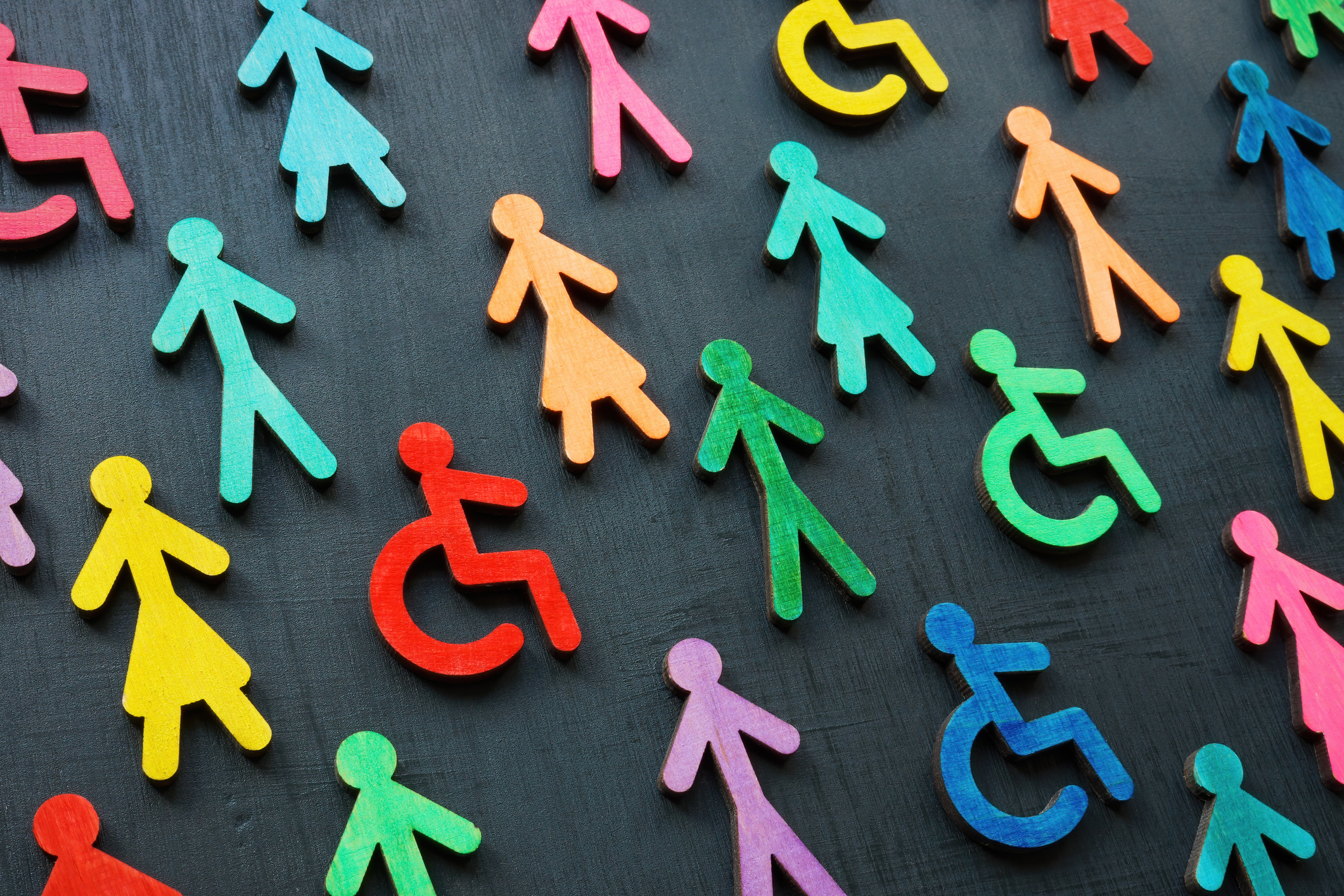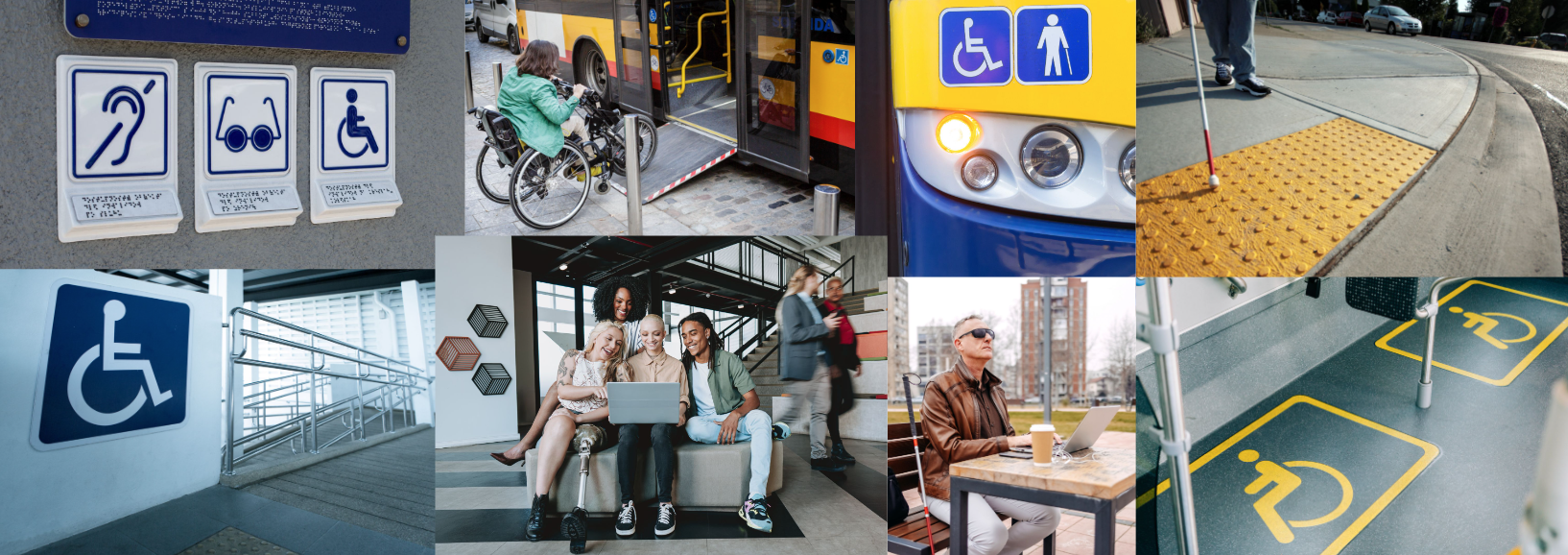
July 26th marks the anniversary of the enactment of the Americans with Disabilities Act (ADA) in 1990. This landmark civil rights law prohibits discrimination against people with disabilities and ensures accessibility across public buildings, businesses, communications, transportation, and employment.
In this blog post, we cover the history behind the ADA, its key components, and the positive changes that have resulted from its enactment.
Before the ADA
Before the ADA was passed, discrimination against people with disabilities was rampant. In the late 19th century, there were even laws that made it illegal for people with disabilities who were “unsightly” to be seen in public.1 This discriminatory ideology also led to sterilization laws against people with disabilities (as well as people of color) being put into place in the 20th century. While forced sterilization has become less common in practice, many of these laws are still in place today.2
As you can imagine, this discrimination was also common as a barrier to employment. There were limited employment opportunities, and if a person with a disability was even able to get a job, employers were not required to provide any kind of accommodation.
Additionally, accessibility was not considered in the construction of buildings, communication, and transportation, among other systems. Things like ramps, elevators, and other accommodations were few and far between, making it challenging for people with disabilities to participate in everyday life.
In the 1970s, Section 504 of the Rehabilitation Act was drafted, which was the first legislation to address issues of equality for the disability community. After ups and downs of support and revisions, Jimmy Carter attempted to alter the law at the last minute to incorporate a “separate but equal” view of people with disabilities. When news of this spread, it triggered a 25-day sit-in at a federal building in San Francisco, which still holds the record as the longest peaceful sit-in. Section 504 was eventually signed into law in 1977.
The Key Components of the ADA

The ADA was eventually drafted to expand the scope of Section 504 and establish a more comprehensive federal law. After several revisions, it was signed into law on July 26, 1990.
Here are the main provisions outlined by the ADA and what they do.
Title I: Employment
- Title I prohibits discrimination against people with disabilities during any part of the employment process – application, hiring, firing, career advancement, compensation, job training, etc.3
Title II: Public Services and Transportation
- Title II covers all activities of the state and local governments by requiring that people with disabilities have reasonable access to all of their services, programs, and activities.3
- Title II also covers public transportation and requires transportation authorities to comply with accessibility requirements in newly purchased vehicles and offer paratransit services.3
Title III: Public Accommodations
- Title III prohibits discrimination against people with disabilities regarding access to public venues, including restaurants, schools, hotels, shelters, daycares, recreation facilities, doctors’ offices, and more.3
- It also requires public accommodation and commercial facilities that are newly constructed, rebuilt, or refurbished to comply with ADA standards.3
Title IV: Telecommunications
- Title IV requires telephone and television access for people with hearing and speech disabilities. Common carriers must establish interstate and intrastate telecommunications relay services 24/7.3
How the ADA Has Affected Positive Change

By providing support and protections for people with disabilities, there have been numerous positive changes due to the ADA.
- Fostering Education – because schools are required to provide accommodations to students under the ADA, there are more opportunities for people with disabilities to focus on learning. This allows for learning to be the focus of students with disabilities, which also leads to more opportunities.
- Building a better workforce – people with disabilities are protected in their employment and, through accommodations, have the ability to work in a wider range of jobs than ever before. The technology boom has also provided helpful tools and jobs that make the workforce a more equitable place for people with disabilities.
- Creating autonomy – having accessible public transportation means that more people with disabilities have autonomy over how and where they get around. Transportation is liberating for so many people by giving people access to the world around them.
- Enjoying everyday experiences – because places like movie theaters are now required to have accessible options, like closed captioning and audio descriptions, more people can find joy in all kinds of spaces and experiences.
- Shifting social attitudes – by promoting inclusivity, the ADA has helped to shift how people with disabilities are perceived by society. Public awareness has been raised through campaigns and advocacy, which has promoted the importance of inclusion and dispelled myths about people with disabilities.
- Increasing accessibility – accessibility is key. It allows everyone to be included in spaces and systems of all purposes. When people have access to buildings or communications they need, it means that they can be included as important members of our society. This creates a better, more productive experience for everyone.
While we still have a long way to go until we reach true equality, the Americans with Disabilities Act was a huge step in furthering civil rights for people with disabilities.
At Self-Help, our mission is to foster ownership and economic opportunity for all. This means standing against discrimination and supporting inclusive environments for everyone, including people with disabilities. We are honored to celebrate this momentous legislation. We hope you’ll join us in continuing to learn about creating accessible spaces and finding ways to foster opportunities for everyone.
Sources: